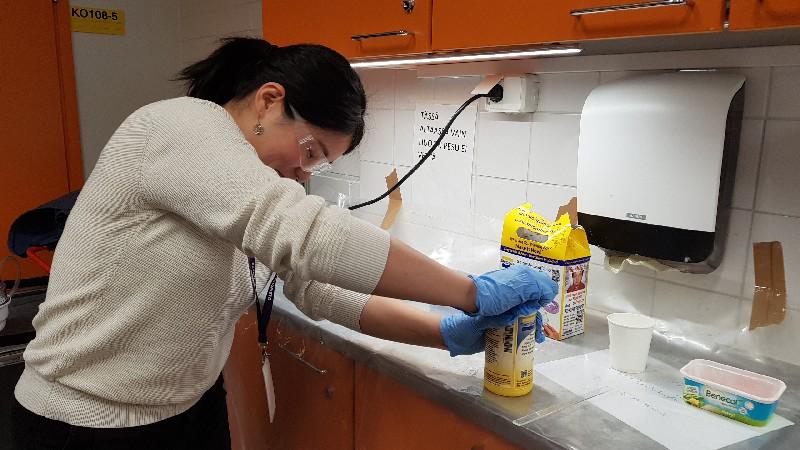Assignment name
Group members
Assignment
group project: review the safety data sheets for each of your molding and casting materials, then make and compare test casts with each of them
Process
We compared following materials.
- Smooth-sil 940
- Oomoo 25
- Smooth-cast 310
- Smooth-cast 305
We went to the room that we used for casting the molds. 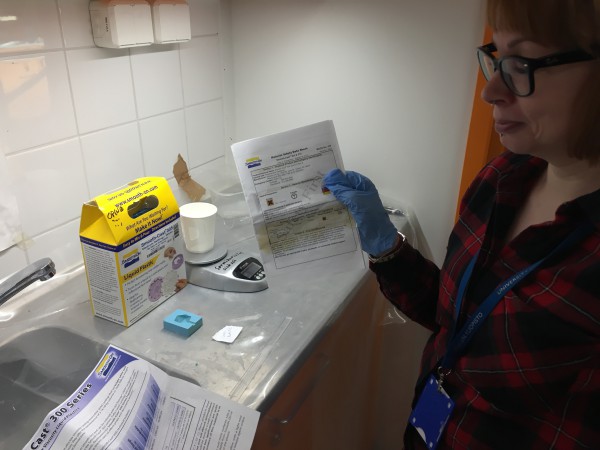
We turned ventilation on and wore gloves and safety glasses. This is a must when working with different chemicals. We also made sure that the surfaces we are mixing the materials in were properly covered so no damage can be caused if we spill something. Before each test, we then read data sheet of each material carefully --> What we learned from the datasheets is documented under each test. 
Casting silicone
For testing how to make the silicone rubber molds, we first selected a negative mold from the ones that were available in the FabLab. We used this one featuring a dog.
We selected two different types of rubber for making our test molds: SmoothSil 940, and Oomoo 25. Before testing we were told that the Smoothsil was in working order, but the Oomoo had a problem of its quality from manufacturing process – We decided to test it anyway, just to see how it reacts.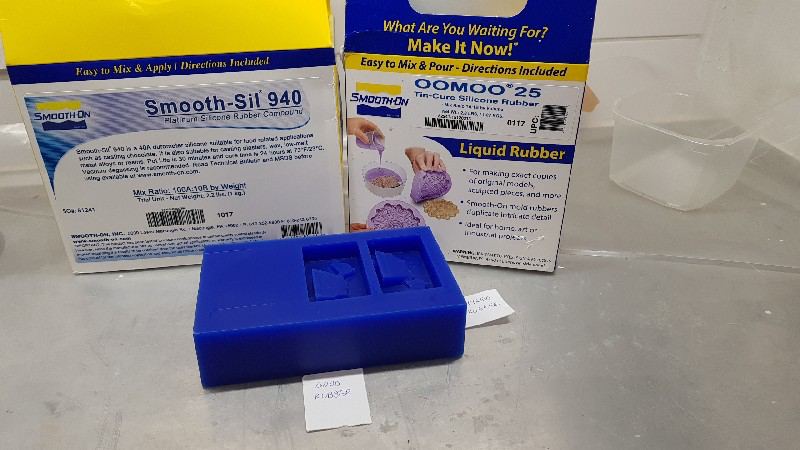
We started out experimenting with Smoothsil 940. From reading the attached documentation we found out:
- that it is prepared by mixing part A with part B. The mixing ratio is 100A:10B by weight.
- When Smoothsil 940 is mixed, it has a pot life of 30 minutes (pot life meaning that you have to use it within that time frame).
- The cure time is 24 hours – meaning that your mold is ready to be used in 24 hours after it is cast.
As for safety, the datasheet instructs us to only use in a properly ventilated area (check!). Wear safety glasses (check!), long sleeves and rubber gloves to minimize contamination risk (doublecheck!). With Smoothsil940, you should wear vinyl gloves only. Latex gloves will have an effect on the cure of the rubber.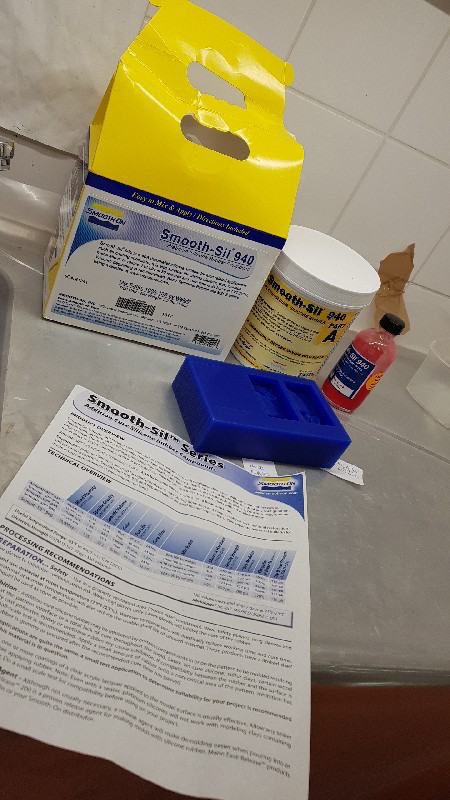
Before measuring the ingredients, we shook part B (red liquid) througly, as advised in the instructions. This was done to re-disperse the pigments that might have settled in the bottom of the bottle. Then we used a digital scale to measure the ingredients individually. We used 50 grams of part A and 5 grams of part B. Then we mixed them together a total of 3 minutes, scraping from the sides and the bottom several times.
When we were done mixing the ingredients, the pot was placed in a vacuum for degassing. The instructions said the mixture should be in the vacuum for 2-3 minutes.
We however held the mixture in the vacuum overtime, closer to 5 minutes, as new bubbles seemed to form all the time. At this point the product also expanded a lot in the pot, so it was good that we had left quite a lot of room in it.
After vacuum, we poured the rubber into the mold on it’s deepest point, letting it seek its own way up and over the model.
Next we tried to experiment with Oomoo25.
We learned from the datasheet that:
- OoMoo25 is prepared by mixing parts equal amounts of parts A and B.
- After dispensing the parts in a mixing container, we should mix thoroughly for 3 minutes making sure that you scrape the sides and bottom several times.
- OoMoo25 has a 15-minute pot life and
- 75 minute cure time.
- And vacuum degassing is not necessary
As for safety, the instructions were the same as for smoothsil: use in a properly ventilated area, wear safety glasses, long sleeves and rubber gloves to minimize contamination risk. For gloves, with you should wear vinyl gloves only.
When we opened the OoMoo25 products, we saw that our attempts would be in vain. When the product had expired it had hardened into the container. We had trouble opening the lid, and when we did, we saw that the contents had already hardened into a bouncy rubber.
Luckily, the Smoothsil 940 mold turned out OK – Here it is after 24 hours of curing – No visible air bubbles and a nice consistency.
Casting plastic
We used previous year student’s silicone mold to test casting plastic. First we tried casting of smooth-cast 305. We read data sheet to understand safety and instructions and found out that:
- Smooth-cast 305 consists of two liquid, part A and part B.
- It is prepared by measuring equal amount of part A and part B (100A: 90B by weight) and mixing them, and we should make sure that to scrape the sides and bottom of the mixing container several times.
- The pot life is 7 minutes
- the cure time is 30 - 40 minutes
- And vacuum degassing is not necessary
As for safety, the instructions we learned that mixing tools and containers should be clean and made of metal, glass or plastic. And again, mixing should be done in a well-ventilated area, wearing safety glasses, long sleeves and rubber gloves to minimize contamination risk. We also learned that these products have a limited shelf life and should be used as soon as possible.
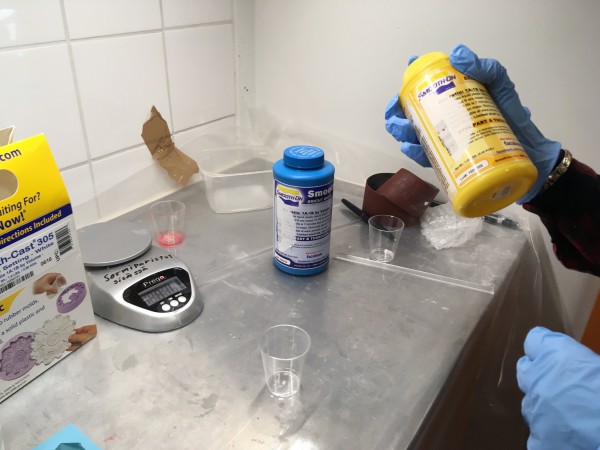
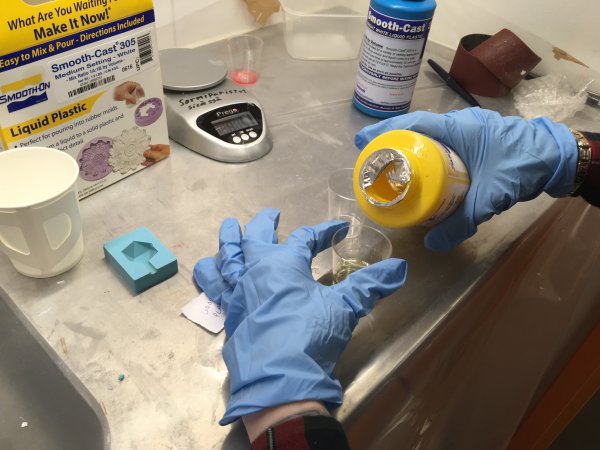
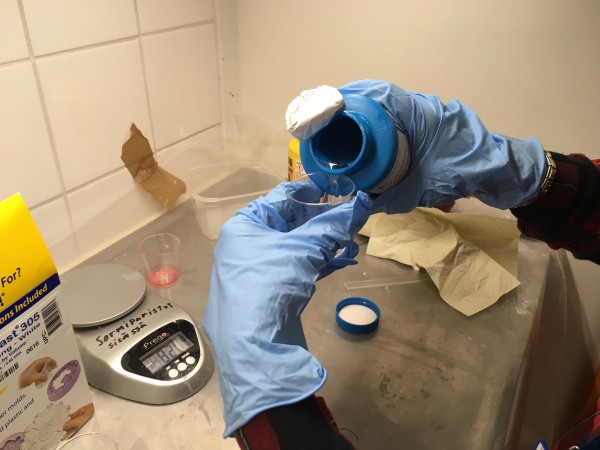

We stirred to scrape side and bottom of the container thoroughly. 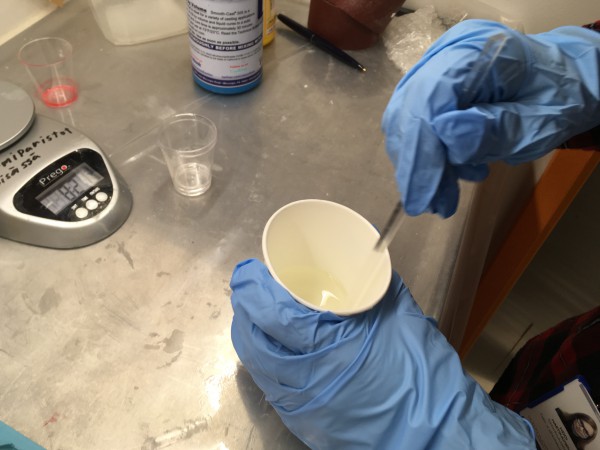
After mixing two liquid we poured the liquid into silicone mold before the pot time ends. 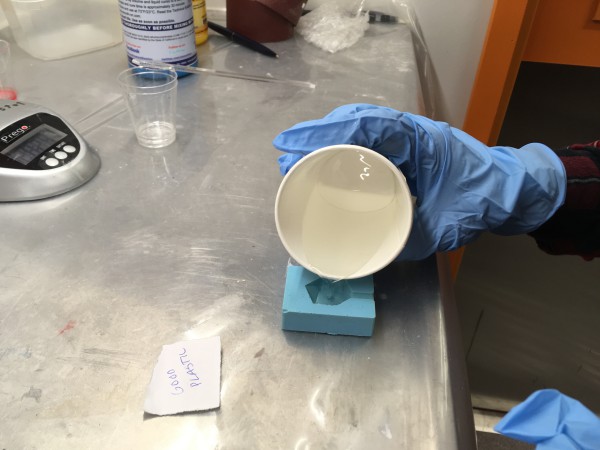
We waited for the material to "Cure". While we were waiting we realised it was getting hot by chemical reaction.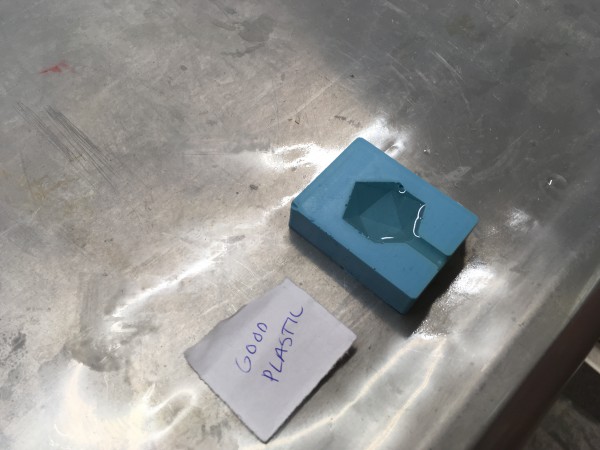
We took the plastic object from silicone mold. The clear liquid turned to be white plastic objects. The quality of the result was good.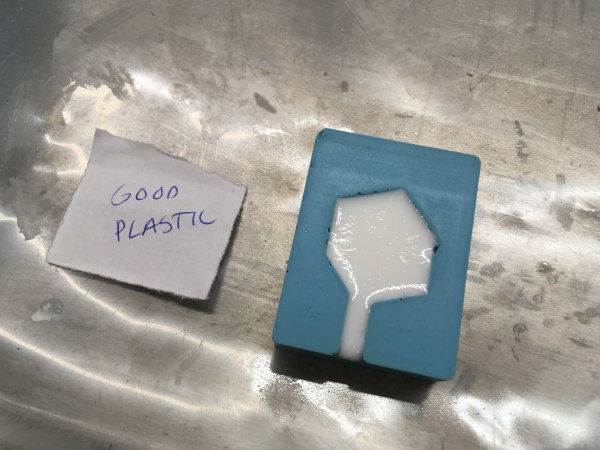
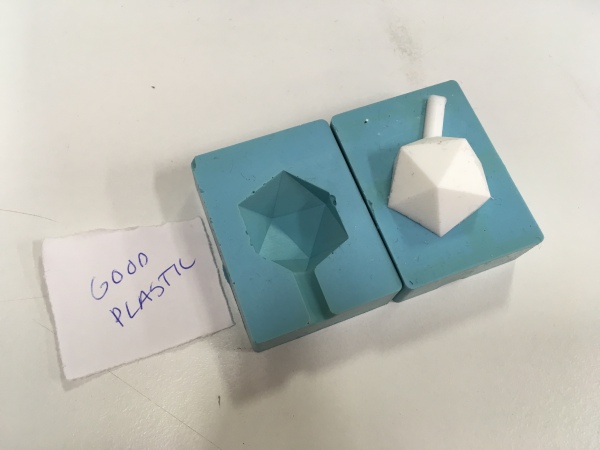
Lastly we tried smooth-cast 310 which has been opened about two years ago. We read the datasheet and learned that the use instructions and safety instructions are the same as for smooth-cast 305, but
- Pot life is longer (20 mins)
- Cure time is also longer (2 - 4 hours)
After reading the datasheed, we however found the lid was stuck and we couldn’t open it. It is important always clean the bottle and the lid after use.